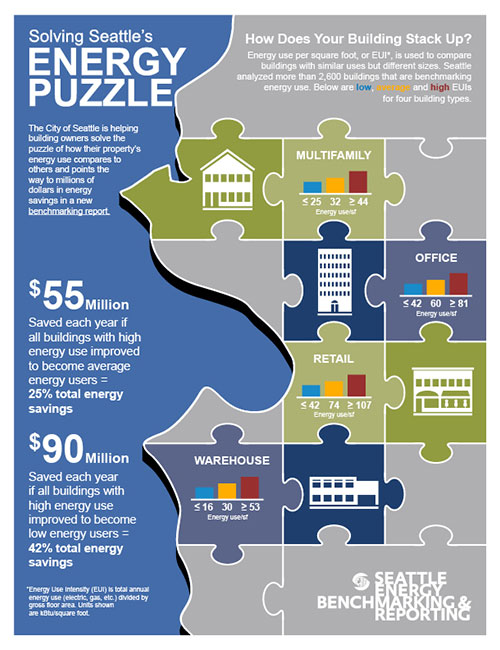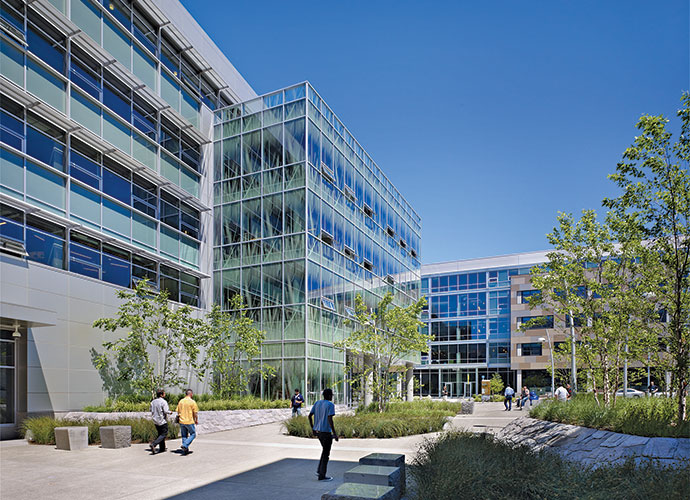As of last spring, Seattle was home to enough LEED-certified buildings that to visit one a day would fill out your entire year’s calendar in a leap year.
Their number ranges from corporate facilities such as Dendreon’s headquarters, multiple Amazon projects and Starbucks galore to facilities on the University of Washington campus and offices of such leading design firms as McKinstry and Perkins + Will.
Site Selection readers already knew that, judging from the metro area’s prominence in our annual Sustainability Rankings, and the area’s pronounced lean toward all things ecological.
Now the area is stretching into new green territory with its government’s own portfolio. On Dec. 9, King County officially adopted an updated green building ordinance.
“By embracing the highest green-building standards in the nation, we are taking action to meet our goal of cutting in half the climate impact of County operations,” said King County Executive Dow Constantine. “At the same time, we will save money on the energy needed to operate our facilities.”
The new green building ordinance advances and improves the County’s green building and sustainable development policy for County-owned operations. Ordinance highlights include:
- Requiring all King County government construction and major renovation projects to strive for the Leadership in Energy and Environmental Design (LEED) Platinum designation.
- Improving value and longevity of public infrastructure by ensuring the design, construction, maintenance and operation of any capital project is consistent with the latest green building and sustainable development practices.
- Ensuring responsible stewardship of public funds through life cycle cost analysis.
- Building a culture of performance by establishing minimum performance requirements for energy, emissions, stormwater management, and construction and demolition materials diversion.
- Including green building for King County affordable housing projects that increase equitable access to improved public health, air quality, living and working environments, and walkable communities.
- Encouraging innovation and supporting flexibility by adding alternative green building rating systems, including Built Green, Evergreen Sustainable Development Standard, Salmon Safe and Living Building Challenge.
- Supporting voluntary green building efforts in the region.

The legislation adopted by the County Council requires that King County building projects comply with environmental standards if they can be achieved within certain cost constraints. The newly adopted policy will help King County meet several long-term targets, including cutting in half the total greenhouse gas (GHG) emissions from government operations by 2030, compared to a 2007 baseline, by 50 percent; and reducing by at least 80 percent the overall GHG emissions countywide by 2050, compared to 2007 levels.
Meanwhile, the City of Seattle has its own robust Green Building program that facilitates green building policies and programs in both city operations and commercial practices. Key programs include the Sustainable Buildings and Sites policy. Within the Department of Planning and Development, Priority Green permitting incentives are well established and will continue to grow.
A report and infographic released Jan. 8 by the Seattle Office of Sustainability and Environment on building energy use reveals that “Seattle building owners are poised to save tens of millions of dollars on energy annually by improving their building’s energy efficiency.” The city also recently released its Resource Conservation Management Plan, which sets guidelines for reducing energy use in City-owned buildings 20 percent by 2020.
“Seattle has the right experience, local talent and programs in place to make all our buildings more energy efficient,” said Sustainability and Environment Director Jill Simmons. “Improving building energy efficiency benefits the entire city by lowering energy costs, reducing carbon emissions and making Seattle an even more attractive place to live and work.”
The report, “Seattle 2011/2012 Building Energy Benchmarking Analysis” summarizes the benchmarking results of more than 2,600 private-sector buildings representing nearly 228 million sq. ft. (21.2 million sq. m.), including offices, hotels, apartment buildings, retail stores, religious and educational institutions and more. Building owners provided energy use information to the City as required under the City of Seattle’s Building Energy Benchmarking and Reporting Ordinance.
As the table below illustrates, the analysis established performance ranges for 13 different building types based on their reported 2012 energy use. Among its findings:
- An office building reporting an energy use intensity (EUI or energy use per square foot annually) of 60 kbtu/sf is about average for Seattle.
- Of the 890 buildings in Seattle that received U.S. EPA ENERGY STAR scores in 2012, the average score for all buildings was 68, meaning that overall, Seattle buildings performed 18% better than the national median. And 41 percent had a score of 75 or greater, making them eligible to earn ENERGY STAR certification.
- Seattle’s oldest buildings are not necessarily high energy users: Office buildings constructed before 1950 and since 2000 used the least energy. Those built between 1960 and 1980 used the most energy.
To date about 93 percent of buildings have had 2012 data reported to the City —the highest compliance rate in the nation for benchmarking laws. Seattle is one of nine U.S. cities with benchmarking ordinances.
